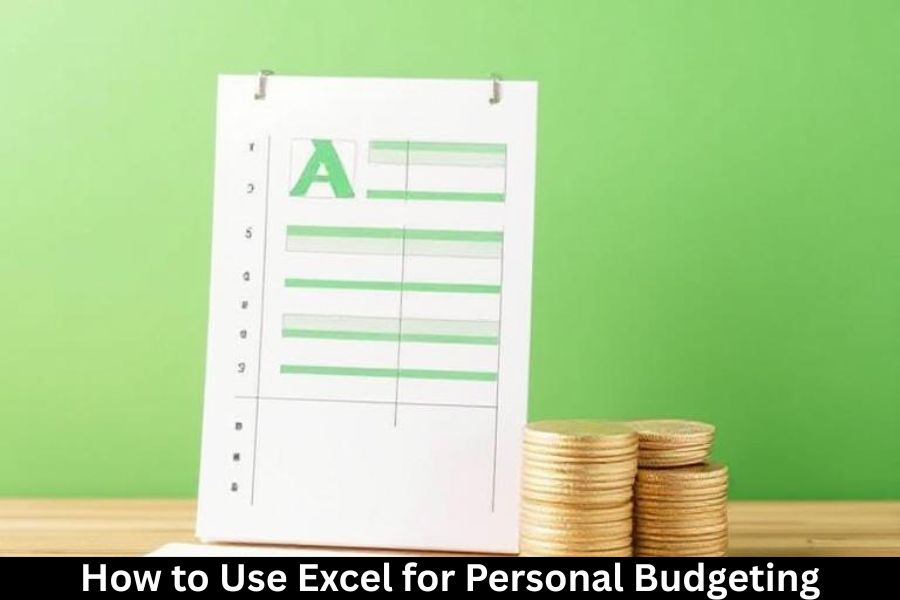Why Budgeting Matters
The Power of Knowing Where Your Money Goes
Ever wonder why your paycheck disappears like a magic trick? Budgeting gives you the full picture of your financial life. When you track your income and expenses, you take control.
Budgeting vs. Guessing: A Real-World Perspective
Would you drive blindfolded? Probably not. Yet that’s exactly how many people approach their finances—no plan, no visibility. Budgeting in Excel is like turning on your high beams.
Why Choose Excel for Budgeting?
Excel is More Than Just Grids
Think of Excel as your personal finance sidekick. It’s flexible, powerful, and already on most computers.
Budgeting Templates Galore
Don’t want to build a sheet from scratch? No worries. Excel offers built-in templates that’ll have you budgeting like a pro in minutes.
Getting Started With Excel Budgeting
Tools You’ll Need
Just Excel (or Google Sheets if you’re on a Chromebook). Bonus if you have access to Excel 365—it includes powerful cloud features.
Setting Up Your First Budget Sheet
Start with a blank sheet. Name it something motivational like “Money Master Plan” or “Debt-Free Journey.”
Basic Budgeting Concepts You Should Know
Income vs Expenses
Your income is what you earn; expenses are what you spend. It’s the core of budgeting.
Fixed vs Variable Costs
Fixed = rent, car payments. Variable = groceries, gas. Knowing the difference helps you find areas to trim.
Needs vs Wants
Netflix? Want. Electricity? Need. You get the idea.
Building a Simple Monthly Budget in Excel
Step-by-Step Instructions
Step 1: Open a Blank Workbook
Name your tabs: “Monthly Budget,” “Expenses,” “Savings Goals.”
Step 2: Create Income and Expense Headers
List out categories like Salary, Freelance, Rent, Utilities, Groceries, etc.
Step 3: Input Monthly Figures
Fill in what you expect to earn and spend. Be honest—this only works if you’re real with yourself.
Step 4: Use SUM and SUBTOTAL Formulas
Want Excel to do the math? Use formulas like =SUM(B2:B10) to total up expenses.
Step 5: Create a Running Balance
Add a column to track how much is left after each expense.
Make It Visually Appealing
Use Conditional Formatting
Color-code expenses over budget in red. Trust me, red is a wake-up call.
Add Data Bars and Color Scales
Use Excel’s built-in formatting tools to make trends easier to spot at a glance.
Automate Your Budget Sheet
Use Formulas to Avoid Manual Errors
Create formulas for monthly totals and savings percentages. Excel never forgets.
Use Drop-Downs for Categories
Create drop-down lists using Data Validation to standardize your entries.
Budgeting Templates to the Rescue
Where to Find Ready-Made Templates
Search “budget” under Excel templates or check Microsoft Office online.
When to Customize Your Own
If you have unique financial goals or categories, build your own from scratch.
Analyzing Your Spending
Create Pie Charts and Bar Graphs
Visualize your spending by category. Pie charts make it easy to see what’s eating your budget.
Monthly Trends and Overspending Alerts
Track your spending month to month. Notice a trend? Adjust accordingly.
Budgeting for Specific Goals
Saving for a Vacation
Add a goal tracker with progress bars. Makes saving feel like leveling up in a game.
Paying Off Debt Faster
Track balances and interest. Watch the numbers shrink—it’s satisfying!
Emergency Fund Planning
Create a separate section for emergency savings and automate contributions.
Sharing Budgets With Family or Partners
Collaborating in Excel or Google Sheets
Share your sheet in the cloud for real-time updates and teamwork.
Transparency Builds Accountability
Budgeting with a partner? No secrets. Total transparency = less stress.
Keeping Your Data Secure
Using Password Protection
Excel allows you to password-protect your sheet. Great for privacy.
Backing Up Files in the Cloud
Avoid losing your hard work. Save your sheets to OneDrive or Google Drive.
Excel Budgeting Mistakes to Avoid
Forgetting Irregular Expenses
Don’t overlook things like birthdays, car registration, or back-to-school shopping.
Overcomplicating Your Budget
Keep it simple. A budget that’s too fancy might just sit unused.
Benefits of Tracking Your Budget Regularly
Spotting Patterns and Habits
Noticing too many takeout expenses? Now you know where to cut back.
Becoming More Financially Conscious
Budgeting helps you make smarter, more mindful choices every day.
Final Thoughts on Excel Budgeting
Using Excel for personal budgeting is like giving your finances a GPS. You’ll never wonder where your money went again. With just a little setup and consistency, Excel can help you save more, stress less, and reach your financial goals faster than you ever thought possible.
FAQs
1. Do I need to be good at Excel to start budgeting with it?
Not at all! Basic knowledge like using SUM formulas and formatting rows is enough. Templates make it even easier.
2. Can I use Google Sheets instead of Excel?
Absolutely. Most Excel functions work in Google Sheets, and it’s great for collaboration.
3. How often should I update my Excel budget?
Ideally, check in weekly and do a full review at the end of each month.
4. Is there a free Excel budgeting template available?
Yes! Excel has free built-in templates. You can also find downloadable ones online tailored to different needs.
5. What if my income is irregular?
Build your budget based on an average of the past few months. Prioritize essential expenses and savings.



